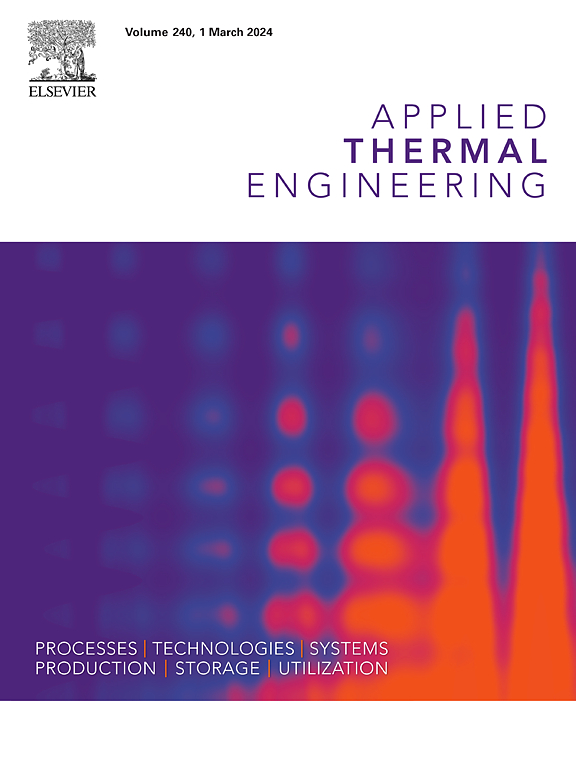Revealing baffle-enhanced heat transfer mechanism in an indirectly heated rotary kiln by discrete element method modeling
IF 6.1
2区 工程技术
Q2 ENERGY & FUELS
引用次数: 0
Abstract
Baffles are often configured in indirectly heated rotary kilns in order to improve their performances on transferring heat to the particle bulk that is processed in the equipment. However, design of baffles still mainly depends on the empirical knowledge due to insufficient development of relationships revealing the influences of baffle configurations on the heat transfer coefficient. In this research, the heat transfer process in a rotary kiln with straight baffles was simulated by an in-house discrete element method and the impacting mechanism of baffles on the heat transfer between the rotary kiln shell and the particles was explored. The result suggests that installing baffles is capable of improving the contact surface area between the kiln shell and the particle bed, which is a dominant factor for the enhanced heat transfer performance. Baffle parameters including the baffle number and the baffle length have significant influences on the uniformity of the particle bed temperature distribution by directly affecting the particle mixing process. When the filling level is 25%, configuration of 8 baffles with a length of is determined to be an optimal configuration with being the static bed depth. The additional heat transfer area supplied by the baffle structure is also favorable for reducing the thermal time constant and its contribution takes approximately 20% in the optimized configuration.

求助全文
约1分钟内获得全文
求助全文
来源期刊

Applied Thermal Engineering
工程技术-工程:机械
CiteScore
11.30
自引率
15.60%
发文量
1474
审稿时长
57 days
期刊介绍:
Applied Thermal Engineering disseminates novel research related to the design, development and demonstration of components, devices, equipment, technologies and systems involving thermal processes for the production, storage, utilization and conservation of energy, with a focus on engineering application.
The journal publishes high-quality and high-impact Original Research Articles, Review Articles, Short Communications and Letters to the Editor on cutting-edge innovations in research, and recent advances or issues of interest to the thermal engineering community.
 求助内容:
求助内容: 应助结果提醒方式:
应助结果提醒方式:


